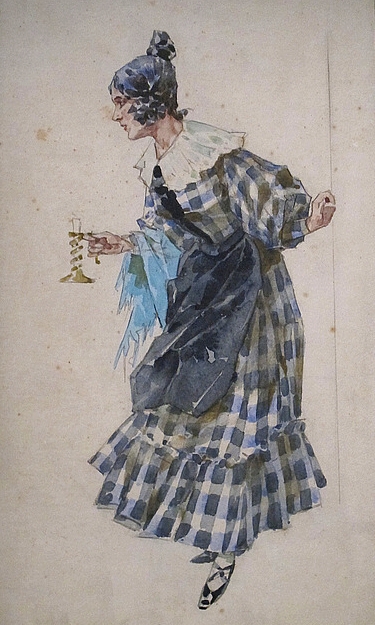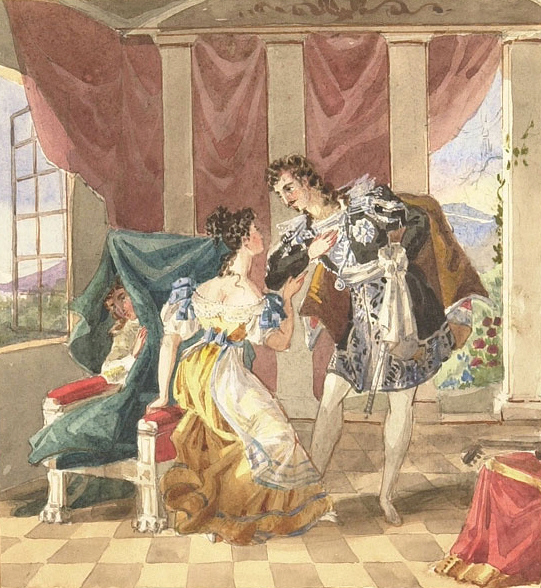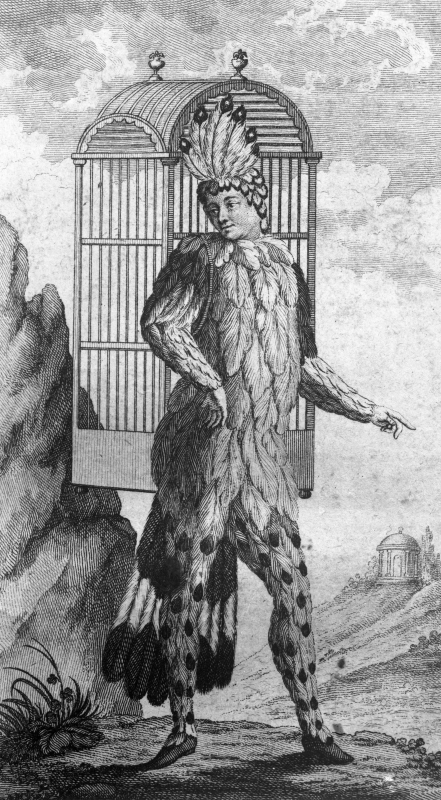|
Markus Werba
Markus Werba (born 14 November 1973) is an Austrian baritone opera singer.http://www.bbc.co.uk/wales/singeroftheworld03/performers/austria.shtml Biography from BBC Biography Born in Carinthia, Austria, Werba began his vocal training aged 16. He studied at the Conservatory of Klagenfurt and University of Music and Performing Arts, Vienna with Ralf Doering, Robert Holl and Walter Berry. He has won numerous competitions for his singing in Austria, Italy, Japan, Slovakia and the UK. He was chosen as Guglielmo in 1997 (''Così fan tutte'') for the inauguration of the Nuovo Piccolo Teatro in Milan by Giorgio Strehler. After his debut in Milan he sang in all major opera houses. Operatic repertoire Bellini *Sir Riccardo Forth ('' I puritani'') Braunfels *Wiedehopf (''Die Vögel'') Britten *Billy Budd (''Billy Budd'') *Demetrius (''A Midsummer Night's Dream'') Cavalli *Mercurio ('' La Calisto'') Debussy *Pelléas ('' Pelléas et Mélisande'') Donizetti *Don Alfonso ('' La favo ... [...More Info...] [...Related Items...] OR: [Wikipedia] [Google] [Baidu] |
Suntory Hall
The is a concert venue in the central Akasaka district of Tokyo, Japan. Part of the Ark Hills complex, it consists of a main concert hall, widely considered one of the finest in the world for its acoustics — indeed Herbert von Karajan called it “a jewel box of sound” — and a smaller side-hall for chamber music. Its roof is an extended, tiered, landscape garden. Construction began in the late 1970s and the facility opened in October 1986. History The Suntory Hall opened on 12 October 1986 in commemoration of the sixtieth anniversary of whisky production and twentieth of that of beer by Suntory. The Herbert von Karajan plaza in front of the Suntory Hall, which was constructed in April 1998, is in remembrance of the maestro, who was involved in the design of the hall and who also recommended its vineyard style as used at the Berliner Philharmonie, in which the audience surrounds the concert floor in the Main Hall. He also helped with its acoustical evaluation. Suntory was ... [...More Info...] [...Related Items...] OR: [Wikipedia] [Google] [Baidu] |
Lucia Di Lammermoor
''Lucia di Lammermoor'' () is a (tragic opera) in three acts by Italian composer Gaetano Donizetti. Salvadore Cammarano wrote the Italian-language libretto loosely based upon Sir Walter Scott's 1819 historical novel '' The Bride of Lammermoor''. Donizetti wrote ''Lucia di Lammermoor'' in 1835, when he was reaching the peak of his reputation as an opera composer. Gioachino Rossini had recently retired and Vincenzo Bellini had died shortly before the premiere of ''Lucia'' leaving Donizetti as "the sole reigning genius of Italian opera".Mackerras, p. 29 Not only were conditions ripe for Donizetti's success as a composer, but there was also a widespread interest in the history and culture of Scotland. The perceived romance of its violent wars and feuds, as well as its folklore and mythology, intrigued 19th century readers and audiences. Sir Walter Scott dramatized these elements in his novel ''The Bride of Lammermoor'', which inspired several musical works including ''Lucia''.Macker ... [...More Info...] [...Related Items...] OR: [Wikipedia] [Google] [Baidu] |
La Bohème
''La bohème'' (; ) is an opera in four acts,Puccini called the divisions '' quadri'', '' tableaux'' or "images", rather than ''atti'' (acts). composed by Giacomo Puccini between 1893 and 1895 to an Italian libretto by Luigi Illica and Giuseppe Giacosa, based on ''Scènes de la vie de bohème'' (1851) by Henri Murger. The story is set in Paris around 1830 and shows the Bohemian lifestyle (known in French as "") of a poor seamstress and her artist friends. The world premiere of ''La bohème'' was in Turin on 1 February 1896 at the Teatro Regio, conducted by the 28-year-old Arturo Toscanini. Since then, ''La bohème'' has become part of the standard Italian opera repertory and is one of the most frequently performed operas worldwide. In 1946, fifty years after the opera's premiere, Toscanini conducted a commemorative performance of it on radio with the NBC Symphony Orchestra. A recording of the performance was later released by RCA Victor on vinyl record, tape and compac ... [...More Info...] [...Related Items...] OR: [Wikipedia] [Google] [Baidu] |
Eugene Onegin (opera)
''Eugene Onegin'' ( rus, Евгений Онегин, italic=yes, Yevgény Onégin, jɪvˈɡʲenʲɪj ɐˈnʲeɡʲɪn, Ru-Evgeny_Onegin.ogg), Op. 24, is an opera ("lyrical scenes") in 3 acts (7 scenes), composed by Pyotr Ilyich Tchaikovsky. The libretto, organised by the composer himself, very closely follows certain passages in Alexander Pushkin's 1825-1832 novel in verse, retaining much of his poetry. Tchaikovsky's friend Konstantin Shilovsky contributed M. Triquet's verses in Act 2, Scene 1, while Tchaikovsky himself arranged the text for Lensky's arioso in Act 1, Scene 1, and almost all of Prince Gremin's aria in Act 3, Scene 1. ''Eugene Onegin'' is a well-known example of lyric opera, to which Tchaikovsky added music of a dramatic nature. The story concerns a selfish hero who lives to regret his blasé rejection of a young woman's love and his careless incitement of a fatal duel with his best friend. The opera was first performed in Moscow in 1879. There are several recor ... [...More Info...] [...Related Items...] OR: [Wikipedia] [Google] [Baidu] |
Hamlet (opera)
''Hamlet'' is a grand opera in five acts of 1868 by the French composer Ambroise Thomas, with a libretto by Michel Carré and Jules Barbier based on a French adaptation by Alexandre Dumas, père, and Paul Meurice of William Shakespeare's play ''Hamlet''.Fauser, Annegret. "Hamlet. Ophélie: Shakespeare in Paris" in ''Hamlet'' CD Booklet (1993), pp. 33–41. Background Ophelia mania in Paris The Parisian public's fascination with Ophelia, prototype of the ''femme fragile'', began in the fall of 1827, when an English company directed by William Abbot came to Paris to give a season of Shakespeare in English at the Odéon. On 11 September 1827 the Irish actress Harriet Smithson played the part of Ophelia in ''Hamlet''. Cairns, David (1969), p. 70. Her mad scene appeared to owe little to tradition and seemed almost like an improvisation, with several contemporary accounts remarking on her astonishing capacity for mime. Her performances produced an extraordinary reaction: ... [...More Info...] [...Related Items...] OR: [Wikipedia] [Google] [Baidu] |
La Cenerentola
' (''Cinderella, or Goodness Triumphant'') is an operatic '' dramma giocoso'' in two acts by Gioachino Rossini. The libretto was written by Jacopo Ferretti, based on the libretti written by Charles-Guillaume Étienne for the opera ''Cendrillon'' with music by Nicolas Isouard (first performed Paris, 1810) and by Francesco Fiorini for ' with music by Stefano Pavesi (first performed Milan, 1814). All these operas are versions of the fairy tale ''Cendrillon'' by Charles Perrault. Rossini's opera was first performed in Rome's Teatro Valle on 25 January 1817. Rossini composed ''La Cenerentola'' when he was 25 years old, following the success of '' The Barber of Seville'' the year before. ''La Cenerentola'', which he completed in a period of three weeks, is considered to have some of his finest writing for solo voice and ensembles. Rossini saved some time by reusing an overture from ''La gazzetta'' and part of an aria from ''The Barber of Seville'' and by enlisting a collaborator ... [...More Info...] [...Related Items...] OR: [Wikipedia] [Google] [Baidu] |
Il Barbiere Di Siviglia
''The Barber of Seville, or The Useless Precaution'' ( it, Il barbiere di Siviglia, ossia L'inutile precauzione ) is an ''opera buffa'' in two acts composed by Gioachino Rossini with an Italian libretto by Cesare Sterbini. The libretto was based on Pierre Beaumarchais's French comedy ''The Barber of Seville'' (1775). The première of Rossini's opera (under the title ''Almaviva, o sia L'inutile precauzione'') took place on 20 February 1816 at the Teatro Argentina, Rome, with designs by Angelo Toselli. Rossini's ''Barber of Seville'' has proven to be one of the greatest masterpieces of comedy within music, and has been described as the opera buffa of all "opere buffe". After two hundred years, it remains a popular work. Composition history Rossini's opera recounts the events of the first of the three plays by French playwright Pierre Beaumarchais that revolve around the clever and enterprising character named Figaro, the barber of the title. Mozart's opera ''The Marriage of Fig ... [...More Info...] [...Related Items...] OR: [Wikipedia] [Google] [Baidu] |
La Finta Giardiniera
' ("The Pretend Garden-Girl"), K. 196, is an Italian-language opera by Wolfgang Amadeus Mozart. Mozart wrote it in Munich in January 1775 when he was 18 years old and it received its first performance on 13 January at the in Munich. There is debate over the authorship of the libretto, written for Anfossi's opera the year before. It is often ascribed to Calzabigi, but some musicologists now attribute it to Giuseppe Petrosellini, though again it is questioned whether it is in the latter's style. In 1780 Mozart converted the opera into a German Singspiel called ''Die Gärtnerin aus Liebe'' (also ''Die verstellte Gärtnerin''), which involved rewriting some of the music. Until a copy of the complete Italian version was found in the 1970s, the German translation was the only known complete score. Roles Synopsis :Time: 18th century :Place: Podestà's estate in Lagonero, near Milan Summary: The story follows Count Belfiore and the Marchioness Violante Onesti, who were lovers be ... [...More Info...] [...Related Items...] OR: [Wikipedia] [Google] [Baidu] |
Le Nozze Di Figaro
''The Marriage of Figaro'' ( it, Le nozze di Figaro, links=no, ), K. 492, is a ''commedia per musica'' (opera buffa) in four acts composed in 1786 by Wolfgang Amadeus Mozart, with an Italian libretto written by Lorenzo Da Ponte. It premiered at the Burgtheater in Vienna on 1 May 1786. The opera's libretto is based on the 1784 stage comedy by Pierre Beaumarchais, ''La folle journée, ou le Mariage de Figaro'' ("The Mad Day, or The Marriage of Figaro"). It tells how the servants Figaro and Susanna succeed in getting married, foiling the efforts of their philandering employer Count Almaviva to seduce Susanna and teaching him a lesson in fidelity. Considered one of the greatest operas ever written, it is a cornerstone of the repertoire and appears consistently among the top ten in the Operabase list of most frequently performed operas. In 2017, BBC News Magazine asked 172 opera singers to vote for the best operas ever written. ''The Marriage of Figaro'' came in first out of ... [...More Info...] [...Related Items...] OR: [Wikipedia] [Google] [Baidu] |
Don Giovanni
''Don Giovanni'' (; K. 527; Vienna (1788) title: , literally ''The Rake Punished, or Don Giovanni'') is an opera in two acts with music by Wolfgang Amadeus Mozart to an Italian libretto by Lorenzo Da Ponte. Its subject is a centuries-old Spanish legend about a libertine as told by playwright Tirso de Molina in his 1630 play '' El burlador de Sevilla y convidado de piedra''. It is a '' dramma giocoso'' blending comedy, melodrama and supernatural elements (although the composer entered it into his catalogue simply as '' opera buffa''). It was premiered by the Prague Italian opera at the National Theater (of Bohemia), now called the Estates Theatre, on 29 October 1787. ''Don Giovanni'' is regarded as one of the greatest operas of all time and has proved a fruitful subject for commentary in its own right; critic Fiona Maddocks has described it as one of Mozart's "trio of masterpieces with librettos by Da Ponte". Composition and premiere The opera was commissioned after the succ ... [...More Info...] [...Related Items...] OR: [Wikipedia] [Google] [Baidu] |
The Magic Flute
''The Magic Flute'' (German: , ), K. 620, is an opera in two acts by Wolfgang Amadeus Mozart to a German libretto by Emanuel Schikaneder. The work is in the form of a '' Singspiel'', a popular form during the time it was written that included both singing and spoken dialogue. The work premiered on 30 September 1791 at Schikaneder's theatre, the Freihaus-Theater auf der Wieden in Vienna, just two months before the composer's premature death. Still a staple of the opera repertory, its popularity was reflected by two immediate sequels, Peter Winter's '' Das Labyrinth oder Der Kampf mit den Elementen. Der Zauberflöte zweyter Theil'' (1798) and a fragmentary libretto by Johann Wolfgang von Goethe titled '' The Magic Flute Part Two''. The allegorical plot was influenced by Schikaneder and Mozart's interest in Freemasonry and concerns the initiation of Prince Tamino. Enlisted by the Queen of the Night to rescue her daughter Pamina from the high priest Sarastro, Tamino comes ... [...More Info...] [...Related Items...] OR: [Wikipedia] [Google] [Baidu] |
Thaïs
Thaïs or Thais ( el, Θαΐς; flourished 4th century BC) was a famous Greek ''hetaira'' who accompanied Alexander the Great on his campaigns. Likely from Athens, she is most famous for instigating the burning of Persepolis. At the time, Thaïs was the lover of Ptolemy I Soter, one of Alexander's close companions and generals. It has been suggested that she may also have been Alexander's lover, on the basis of Athenaeus's statement that Alexander liked to "keep Thaïs with him", but this may simply mean he enjoyed her company, as she is said to have been very witty and entertaining. Athenaeus also says that after Alexander's death Ptolemy married Thaïs, who bore three of his children, and may also have become a Queen of Egypt.Athenaeus: ''The Deipnosophists''Book 13, 576e Burning of Persepolis Thaïs supposedly came from Athens and accompanied Alexander throughout his campaigns in Asia. She came to the attention of history when, in 330 BC, Alexander burned down the palace of ... [...More Info...] [...Related Items...] OR: [Wikipedia] [Google] [Baidu] |



.jpg)




